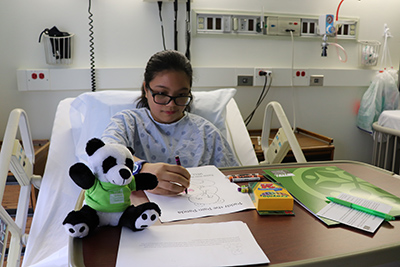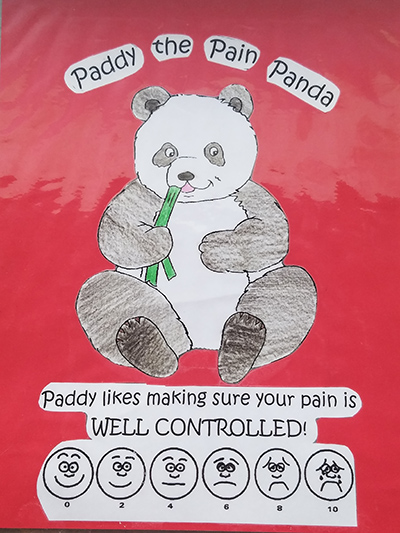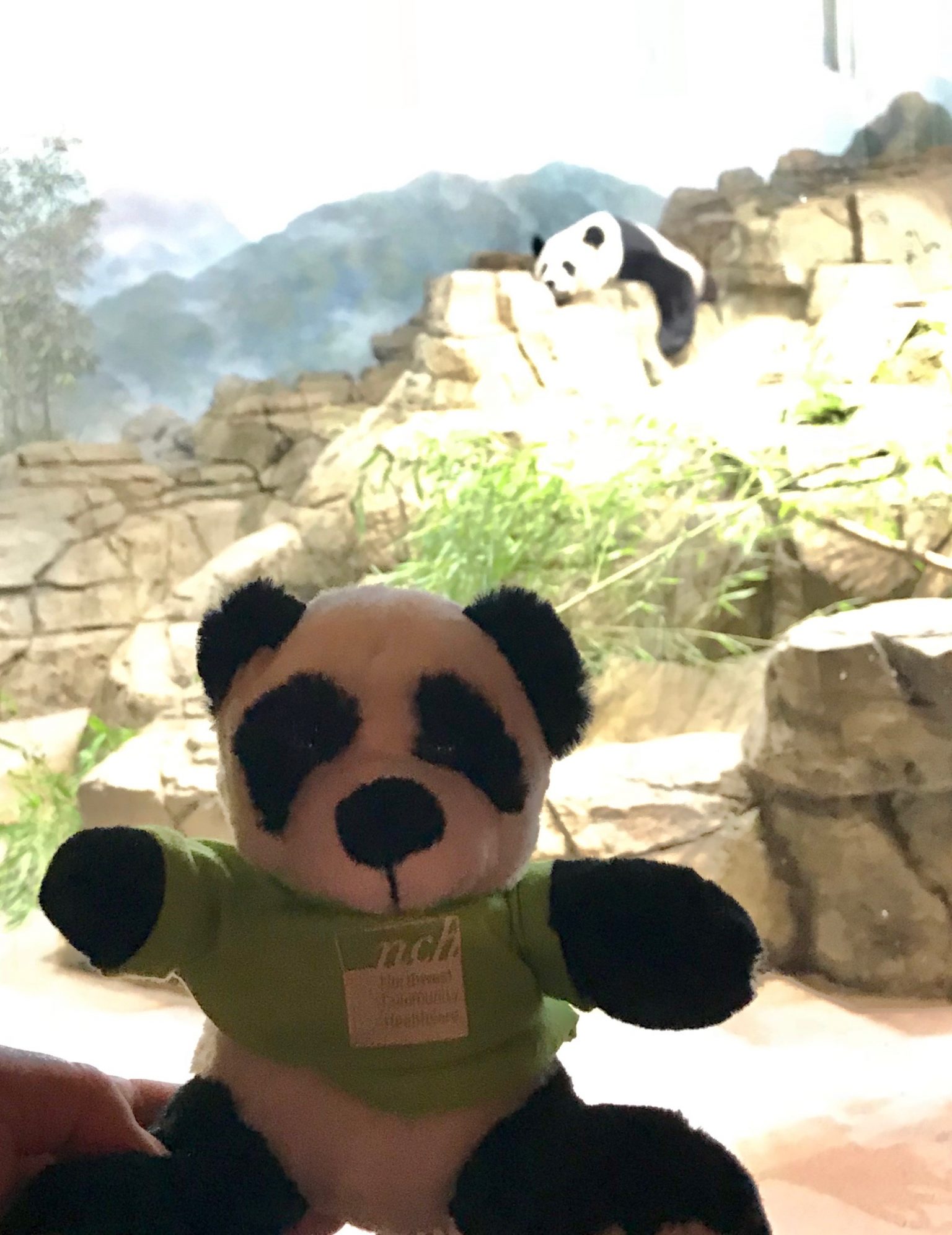Paddy Panda helps with pain
March 5, 2019
“Mommy, it hurts.” These are possibly the hardest three words a parent has to hear, and one of the most difficult moments for anyone with a child in the hospital.

On the Pediatric Unit at Northwest Community Healthcare (NCH) a quality improvement (QI) team of nurses has helped to improve pain management scores with the use of a fluffy friend: Paddy, the Pain Panda.
Paddy – a gender neutral, small stuffed animal – is given to patients between the ages of 3 and 16 who receive pain medication on the unit, explains Clinical Nurse Manager Rochelle Sowa, who says the panda was introduced on the floor in 2015.
“Paddy is our floor mascot,” Rochelle says. “We wanted to bring in something that patients and parents would really remember.”
Because pain isn’t black and white like a panda, Paddy is a reminder to patients and their parents to think about and communicate their level of pain to nurses on the floor. Since some children may not feel well enough or be old enough to do that, they can simply face Paddy toward them or away from them to indicate pain. Patients are reminded about pain management through Paddy during their entire stay, and when they’re discharged, Paddy goes home with them, along with a Paddy the Pain Panda sticker to remind them that their pain was assessed.
“We give patients a Paddy the Pain Panda coloring sheet in a folder for fun upon admission,” Rochelle says. “Even teenagers will color it. There’s a laminated sheet on the wall with Paddy and the universal Wong-Baker FACES® Pain Rating Scale.”
The goal is to assess pain and if it’s not at a good level, nurses can administer pain medication.
“Or we can talk about non-pharmacological ways to bring the pain down, such as rocking, holding, watching a movie, or other distractions,” Rochelle says.
Non-pharmacological interventions also might include play, heat or cold therapy, relaxation techniques or a visit from an NCH therapy dog, part of the Animal Assisted Therapy Program.
What causes pain

Pediatric patients experience pain following surgeries such as tonsillectomies and appendectomies; bone fractures or breaks; abscesses; and infection.
“Those are the most common reasons,” Rochelle says.
The Paddy the Pain Panda Initiative was spearheaded by pediatric QI team members Misty LaForme, R.N., BSN, CPN; Irene Vallesteros, R.N., BSN; Cornelia Johnson, R.N., BSN, CPN; and Elizabeth Matijevic, R.N., BSN, CPN, who decided to share the positive outcomes of their program with other nurses across the nation. Their poster presentations were well-received and showed an increased patient and family satisfaction score that is higher than the benchmark set for hospitals nationwide.
“When it came to pediatric pain, the other nurses hadn’t seen anything else like this,” Rochelle says. “Our Panda stood out.”
The initiative has improved the overall patient experience on the pediatric unit.
“We’re meeting the needs of our patients, paying attention to quality improvement and quality outcomes, and having fun,” Rochelle says.
Pictures with Paddy

To increase the fun factor, nurses have been taking Paddy on a picture-taking extravaganza across the country. Paddy has been to Wisconsin – to the Dells and to the Mars Cheese Castle in Kenosha – as well as New Orleans, Colorado and Washington, D.C. Locally, Paddy’s been to Wrigley Field, Brookfield Zoo, the Chicago Jazz Festival and Northern Illinois University’s School of Nursing.
“The nurses thought it would be fun and we’re using the pictures to possibly start a blog. Paddy may be used as an educational tool on the website to educate families about swim and helmet safety.”
Learn more about our Pediatric Inpatient Unit at NCH.